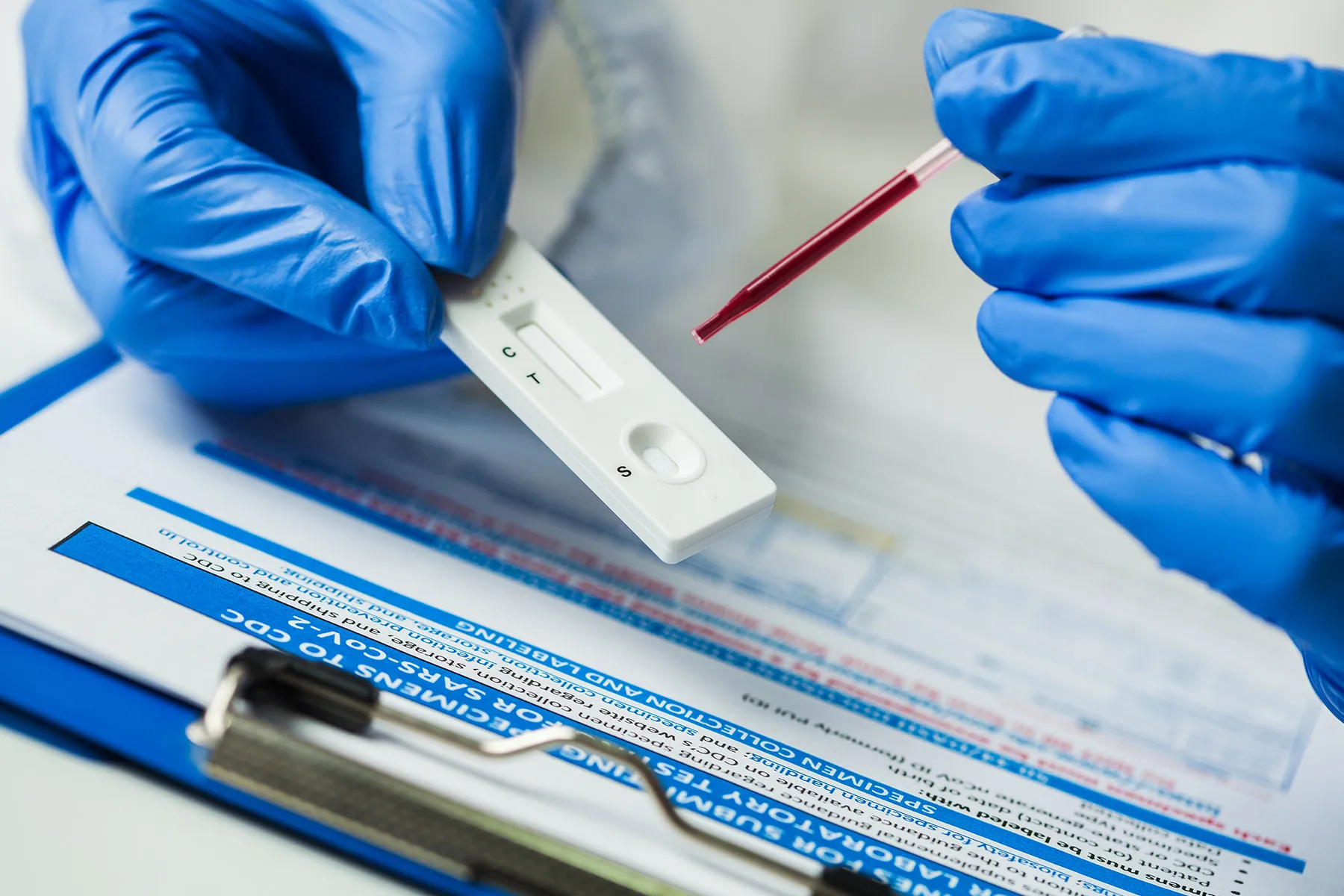Jan. 23, 2024 – You’ve got the symptoms, but your test for COVID-19 isn’t positive. You’re not alone.
JN.1, the now-dominant variant that accounts for nearly 86% of all circulating SARS-CoV-2 strains, may take longer to show a positive result on home antigen tests.
Some infectious disease doctors and patients have reported that tests taken days after symptoms appear turn up negative, then a couple of days later are positive.
It’s triggered uneasiness about the value of the tests. “Are the at-home tests able to detect JN.1?” tweeted one user on X, formerly known as Twitter, echoing concerns of others on social media.
Before blaming the tests for losing effectiveness — or the variant for being too wily to be detected — infectious disease experts offer another explanation: our smarter-than-in-2020 immune systems. They also point to a study published in September that found many patients aren’t getting a positive test until 4 days after infection.
Our immune systems are getting stronger, said Peter Chin-Hong, MD, an infectious disease specialist and professor of medicine at University of California, San Francisco, School of Medicine. As the pandemic has gone on and much of the population has gotten natural infections, vaccines, or both, “we are getting alerted earlier that the enemy is in the body. It’s more related to time rather than to the variant,” he said.
That means we may feel sick earlier from COVID now compared to earlier in the pandemic.
In March 2020, everyone was naive immunologically, he said, and “it took some time for the body to recognize the virus.” Now, just a bit of virus may trigger an alarm by the immune system, with symptoms showing up quickly. These days, he said, “you may now feel sick at day zero instead of day 5.” However, when you test within the first few days, there may not be a very high level of virus, so the home test, less accurate than the less-available PCR tests, probably won’t be positive.
Chin-Hong says he doesn’t think, however, that future variants will stretch out that lag time much further.
‘New Normal’ Not Brand New
These “delayed positives,” as others term them, have occurred with other variants. As the population has gained immunity to due to natural infections, vaccinations, or both, the viral load does peak later, explaining the lag time that can occur on home test results, according to the September report in the journal Clinical Infectious Diseases.
“In our study we observed that in a highly immune adult population (91% had a history of vaccination, natural infection, or both), concentrations of viral RNA and antigen in nasal swab samples were highest around the fourth day of symptoms,” said researcher Nira Pollock, MD, PhD, associate professor of pathology and medicine at Harvard Medical School.
For that reason, the sensitivity of home tests would be expected to be highest around the fourth day of symptoms, she said, although many people with symptoms might test positive earlier.
In the study, Pollock and her colleagues evaluated nasal swab samples from 348 people who had tested positive by PCR testing for COVID, measuring the concentrations in the sample and then estimating the expected sensitivity to home testing. The tests were done from April 2022 to April 2023, well before the JN.1 variant was first detected in the U.S. in September 2023.
Handling the ‘New Normal’
How to handle the lag time?
The CDC advises testing immediately if you have symptoms. If a home test is negative, retest after 48 hours or get a PCR test. It recommends waiting 5 days after exposure to test if you don’t have symptoms, then either test at home again in 48 hours if your first test was negative, or get a PCR test. Those who don’t get the PCR should repeat the home antigen test a third time after another 48 hours. Keep in mind, however, that PCR tests done at a lab are no longer free.
The research shouldn’t discourage testing, Pollock said.
“People should continue to test as soon as they have symptoms,” she said. If they test positive, that information is very important for making treatment and other decisions, she said. The key is that people need to know that one test is not enough. But she acknowledged that repeat testing is both challenging and costly.
According to Chin-Hong, the testing decisions are personal and could depend on a person’s access to tests. “If you have limited tests, I would probably not check immediately [after symptoms occur] but wait and wear a mask.” But he acknowledged that some, including older adults and anyone who is immunocompromised, may want to test earlier and more often, as they want to know their status earlier rather than later.
https://img.wbmdstatic.com/vim/live/webmd/consumer_assets/site_images/articles/health_tools/signs_that_you_may_have_had_covid19_slideshow/1800ss_getty_rf_antibody_test.jpg
2024-01-23 18:20:50





